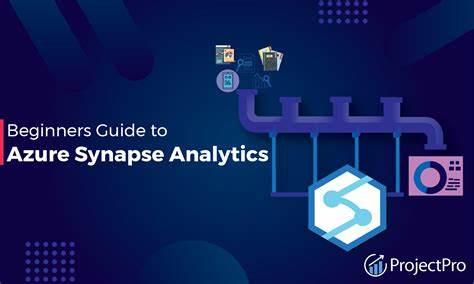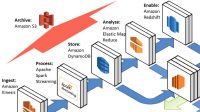In the era of big data, businesses need robust and efficient tools to manage and analyze vast amounts of information. Azure Synapse Analytics is a powerful data integration and analytics service provided by Microsoft Azure. It combines big data processing, data warehousing, and advanced analytics capabilities into a single unified platform. This article explores the features, benefits, and use cases of Azure Synapse Analytics, along with getting started guidance and a comparison with traditional data warehousing solutions.
What is Azure Synapse Analytics?
Azure Synapse Analytics is an integrated analytics service that brings together big data and data warehousing capabilities. For urgent business intelligence and machine learning needs, it enables enterprises to acquire, prepare, manage, and serve data. With Azure Synapse Analytics, users can seamlessly explore and analyze both structured and unstructured data at scale, enabling data-driven decision-making and accelerating time to insights.
Key Features of Azure Synapse Analytics
Data Integration
Azure Synapse Analytics provides robust data integration capabilities, allowing users to ingest data from various sources such as Azure Blob Storage, Azure Data Lake Storage, and on-premises systems. It supports batch, streaming, and real-time data ingestion, making it suitable for a wide range of data scenarios.
Big Data Processing
With Azure Synapse Analytics, organizations can perform scalable and parallel big data processing using Apache Spark. It provides a fully managed Spark environment, eliminating the complexities of infrastructure management. Users can write code in familiar languages like Python, Scala, or SQL, and leverage the power of Spark for distributed data processing.
Data Warehousing
Azure Synapse Analytics offers an integrated and scalable data warehousing solution. It allows users to store and manage large volumes of structured data for analytics purposes. The service leverages a distributed architecture that enables high-performance query processing and optimized storage. It also provides features like columnstore indexing and workload management to enhance query performance.
Advanced Analytics
Azure Synapse Analytics enables advanced analytics capabilities by integrating with Azure Machine Learning and Power BI. Users can build and deploy machine learning models, create interactive dashboards and reports, and gain valuable insights from their data. The integration with Azure Machine Learning allows data scientists to leverage powerful tools and frameworks for model development and deployment.
Benefits of Azure Synapse Analytics
- Scalability: Azure Synapse Analytics scales seamlessly to handle growing data volumes and processing demands. It provides on-demand resources and parallel processing capabilities, ensuring optimal performance even with large datasets.
- Unified Platform: By combining big data processing and data warehousing capabilities, Azure Synapse Analytics eliminates the need for separate tools and integrations. This unified platform simplifies data management and reduces complexity.
- Cost Efficiency: With Azure Synapse Analytics, users only pay for the resources they consume. The service offers autoscaling and pause/resume options, allowing organizations to optimize costs based on actual usage patterns.
- Real-Time Insights: Azure Synapse Analytics supports real-time data processing and analytics, enabling organizations to derive actionable insights from streaming data sources. This helps businesses make informed decisions in near real-time.
- Integration with Azure Services: Azure Synapse Analytics seamlessly integrates with other Azure services such as Azure Data Factory, Azure Databricks, and Azure Logic Apps. This enables organizations to build end-to-end data pipelines and leverage the full power of the Azure ecosystem.
Use Cases of Azure Synapse Analytics
Retail Industry
In the retail industry, Azure Synapse Analytics can be used to analyze customer behavior, optimize inventory management, and personalize marketing campaigns. By combining transactional data, social media feeds, and external market data, retailers can gain valuable insights into customer preferences and trends, enabling them to make data-driven business decisions.





